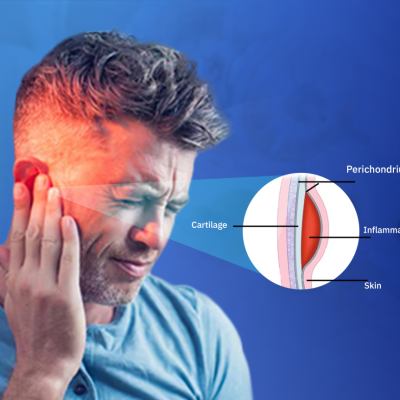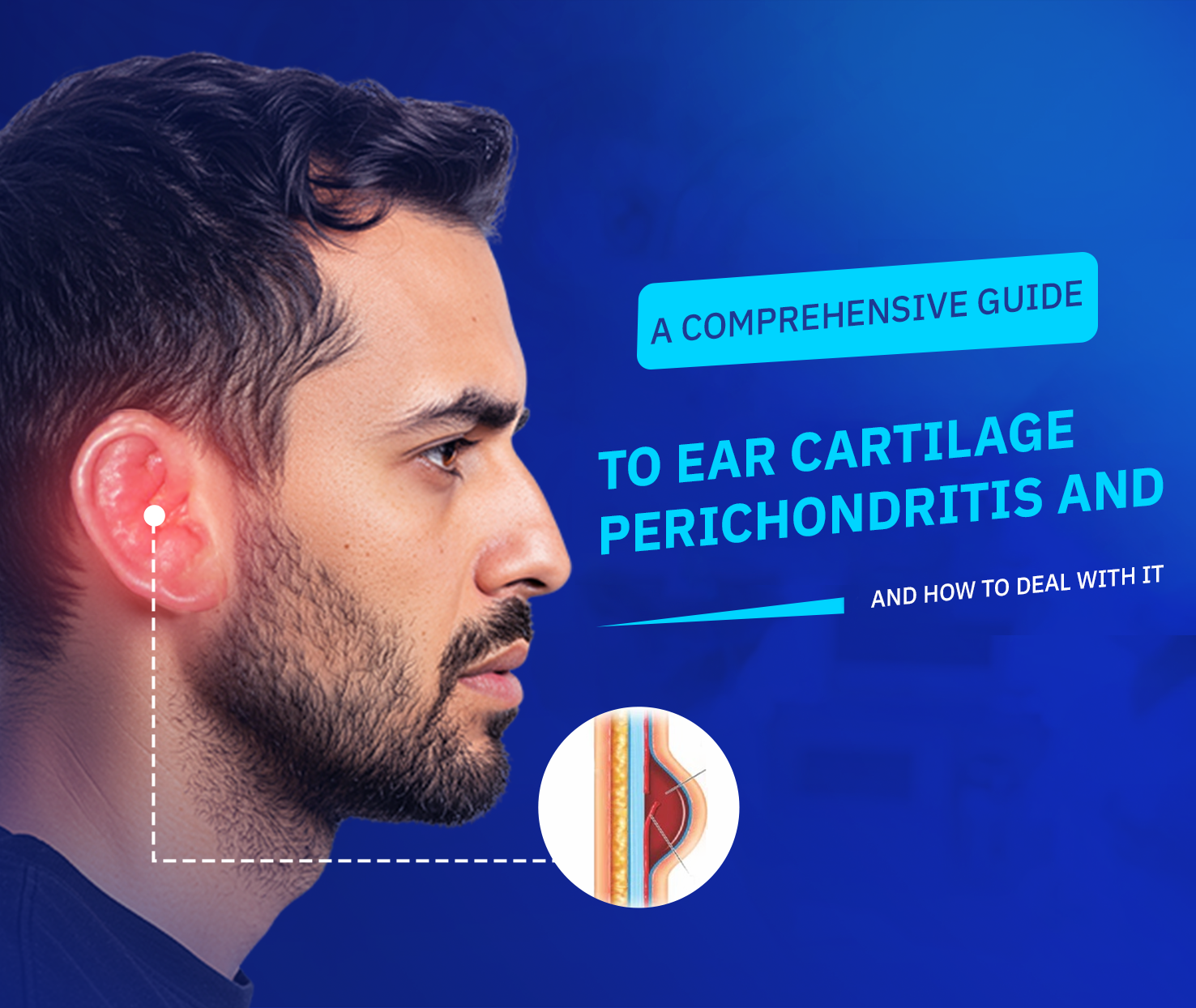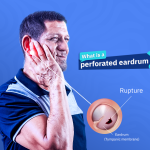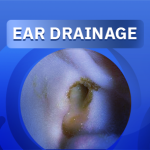Perichondrium
One possible reason for this pain could be perichondritis, an infection that causes swelling and pain in the outer ear. If left untreated, it can lead to serious complications. In this article, we’ll explore everything you need to know about this condition and how to prevent it.
- What Is the Perichondrium?
- Perichondritis
- Perichondritis vs. Cellulitis – What’s the Difference?
- Causes of Perichondritis
- Symptoms of Perichondritis
- How Is Perichondritis Treated?
- How to Prevent Perichondritis?
- What If You’re Already Infected?
What Is the Perichondrium?
Cartilage is the thick tissue that forms the shape of the external ear (auricle) and nose. Surrounding the cartilage is a thin, fibrous tissue layer called the perichondrium, which provides nutrients and structural support to the cartilage. This makes the perichondrium essential for maintaining the health of the ear’s cartilage.

Perichondritis
Perichondritis is a bacterial infection that affects the tissue surrounding the cartilage of the outer ear. It usually develops after an injury, burn, or unsterilized ear piercing. The infection causes severe pain, redness, and swelling, and if left untreated, it can spread to the cartilage itself, leading to pus buildup, reduced blood flow, and permanent ear deformity. However, with early diagnosis and treatment, full recovery is very likely.
Perichondritis vs. Cellulitis – What’s the Difference?
While both are skin infections, perichondritis affects only the upper part of the outer ear, sparing the earlobe. In contrast, cellulitis can affect the entire ear, including the lobe.
Causes of Perichondritis
Perichondritis is often caused by a bacterial infection, commonly by Pseudomonas aeruginosa. Bacteria may enter the perichondrium due to:
- Ear surgery
- Cartilage piercings
- Physical trauma (sports or injury)
- Burns or acupuncture
- Underlying immune-related conditions (e.g. lymphoma, Hodgkin’s disease, HIV, diabetes)
Symptoms of Perichondritis
The infection may start as a mild skin irritation but quickly escalates. Symptoms include:
- Redness and swelling, especially near the injury site
- Increasing pain, especially when touching the ear
Less common symptoms:
- Ringing in the ears (tinnitus)
- Dizziness or loss of balance
- Sudden hearing loss
In severe cases:
- “Cauliflower ear” (deformed ear shape)
- Pus drainage
- Fever
How Is Perichondritis Treated?
1. Medication
Initial treatment involves antibiotics (oral or IV depending on severity). Early-stage infections typically respond well to this approach.
2. Surgical Intervention
In advanced cases involving abscess or cartilage damage:
- A small incision may be needed to drain the pus
- Damaged tissue or cartilage may be removed
- Reconstructive surgery may be performed for cosmetic repair
3. Treating Underlying Immune Conditions
If the cause is autoimmune-related:
- Steroids may be used to reduce inflammation
- Patients are referred to a rheumatologist for further management
How to Prevent Perichondritis?
To lower your risk:
- Avoid piercing the upper ear cartilage
- Refrain from aggressive scratching
- Avoid contact sports
- Treat ear infections early
- Be cautious with acupuncture or any invasive procedures near the ear
What If You’re Already Infected?
With proper treatment, symptoms usually improve within 2–3 days, but mild discomfort may persist for up to a month. If an abscess develops, surgical drainage is essential.
Without treatment, the infection can destroy cartilage, leading to a condition called “cauliflower ear”, requiring reconstructive surgery.
Early diagnosis and treatment of perichondritis are key to avoiding serious complications. Timely use of antibiotics increases the chance of full recovery. If symptoms are ignored and the infection spreads, more intensive treatment — including surgery — may be necessary. Always consult a doctor at the first sign of unusual ear pain or swelling.







